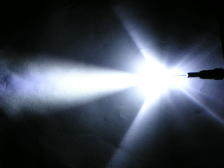Hey guys,
I've seen some complaints about these Epistar 3W LEDs:
 But I thought these were similar or the same from ViparSpectra LED panels and they received a lot of good reviews.
But I thought these were similar or the same from ViparSpectra LED panels and they received a lot of good reviews.
Do you guys know if they ain't a good idea for a DIY LED grow light?
Also, how better are LED grow lights with a lot of small sources compared to ones with less sources with a higher wattage?
Thanks!
I've seen some complaints about these Epistar 3W LEDs:
Do you guys know if they ain't a good idea for a DIY LED grow light?
Also, how better are LED grow lights with a lot of small sources compared to ones with less sources with a higher wattage?
Thanks!






Comment